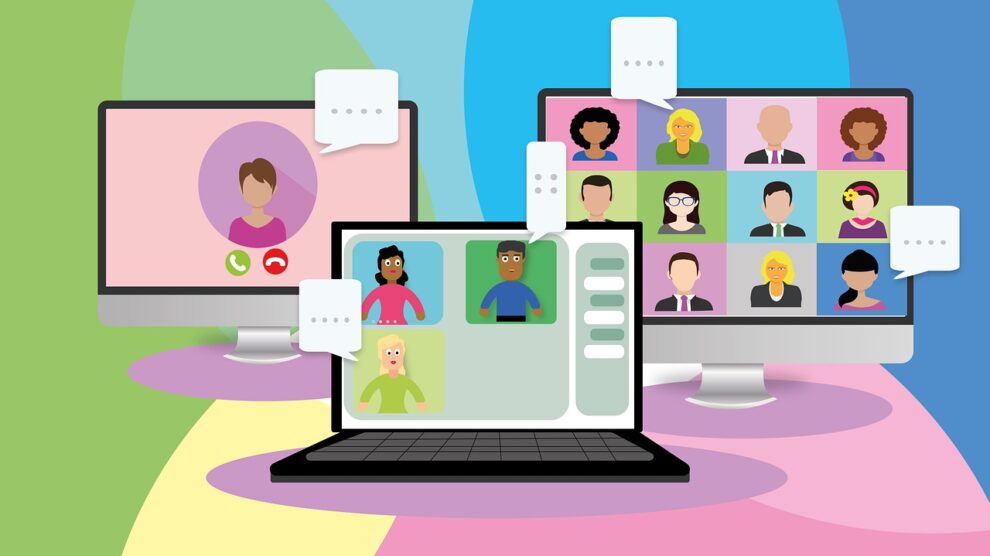If you’re notorious for hosting terrible conference calls, this article is right for you. While conference calls aren’t exactly a science, they’re certainly more difficult to successfully host than one might think. Keeping information relevant and engaging in a conference call setting can prove challenging for even the most organized person. Take your conference calls to the next level and stay organized with this handy guide on how to run a conference call without driving everyone crazy.
Avoid Repetition
Repetition is the enemy of progress in a conference call. Repeating the same concepts or topics over and over again doesn’t help reinforce the topic, but rather drives everyone in the call crazy and makes them hope for the meeting’s end. Avoid too much repetition in your presentations. If you must revisit a topic during the meeting, keep it short and sweet so your callers don’t grow bored or disengage from the topic altogether.
A good way to avoid repetition is to keep track of what you’re discussing. You can do this with an agenda or a simple list of topics to go over in a word document. Organize your ideas for better verbalization and less need to revisit the same topics. An organized call is always more effective than an unorganized one, and your attendees will be grateful for your efforts.
Use an Agenda
A meeting agenda is an absolute necessity for a successful meeting. Without one, the meeting won’t have any direction, and you’ll likely end up deleting the wrong people to attend; which can only serve to derail the meeting and make it less efficient. For maximum efficiency and productivity, use a meeting agenda anytime you’re planning a conference call.
Your agenda should be simple and concise, and should also be shared with the call’s attendees a few days before the conference call is to take place. Keeping everyone informed is the best way to streamline the call, as each caller will enter the meeting ready to go and knowing what to expect.
Agendas can be as simplistic as a Word Document that has the date, time, attendees, and topics on it, or as complex as a template-created agenda complete with detailed topic lists, time blocks, and attendee responsibilities.
A detailed agenda will help you navigate the call better and prepare everyone more effectively. A better-prepared audience is more likely to stay engaged throughout the meeting, and with an agenda, you’ll find your calls are more efficient overall.
Mute Background Noise
It’s high-time someone addressed the elephant in every conference room or call: background noise. Background noise can be utterly distracting and disruptive, and downright annoying depending on the intensity and what kind of noise it is.
Let’s be honest here; no one wants to hear kids screaming, dogs barking, loud music, or people talking in another room during a conference call. Eliminating that pesky background noise can help calls be more efficient and prevent distraction.
It’s important that you become familiar with the mute button, and encourage other callers to do the same. With digital services like those at conferencecalling.com, you can mute other callers if they’re being too distracting with lots of background noise.
Calls should only include relevant call audio, not excessive background noise. Keep excess noise at a minimum for more effective calls and a better experience overall.
Enforce Time Limits
Keeping your call within a one-hour time limit and limiting topics and speakers to specific time blocks is crucial to a streamlined conference call. Some people will keep talking if you let them, so you may need to assign time blocks in order to minimize rambling and give everyone an equal chance to be heard. You also don’t want your meetings to take up too much time, as they can grow tiresome after 45 minutes or so.
If you need to discuss important points, schedule them 15-minute time slots within the one-hour window. If you need more time, it’s best to save it for a follow-up email or a separate meeting. Don’t overburden your callers with long-drawn-out discussions on topics that don’t actually require such in-depth discussion. Keep things simple and enforce time limits for better conference calls.
Be Courteous
Along with using the mute button, there are other simple courtesies that should be observed when you are participating in a conference call. For one thing, talking over other callers is incredibly rude and disrespectful; as is a blatant interruption. Keep your thoughts and words to yourself until it’s your turn to speak, and allow everyone on the call ample time to voice their thoughts on the topics.
A courteous host will not only earn the respect of his or her attendees, but will also encourage retention of information and ensure that everyone gets a chance to speak. This simple gesture of respect can go a long way in solidifying your position and creating more effective conference calls.





